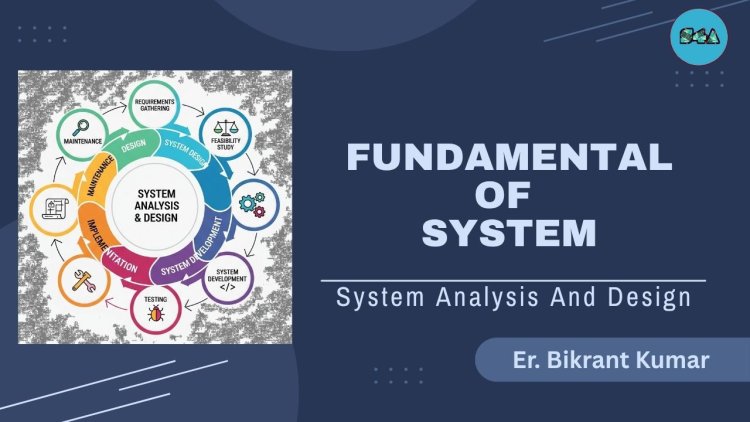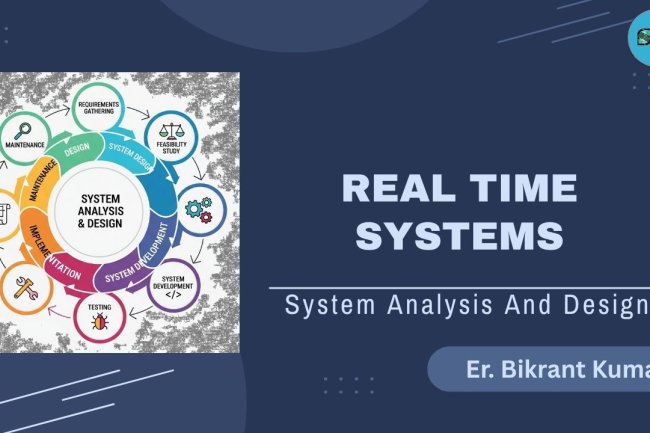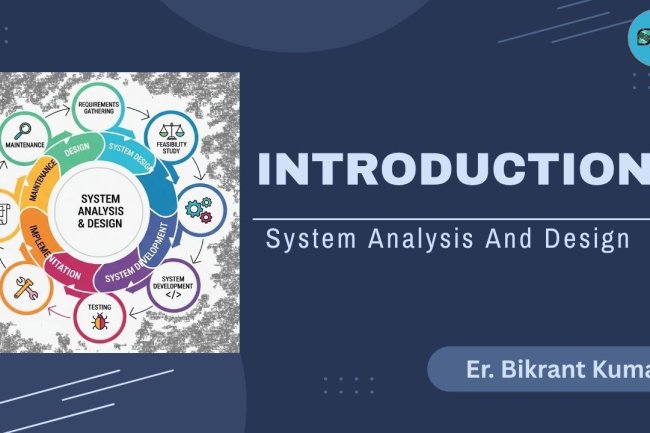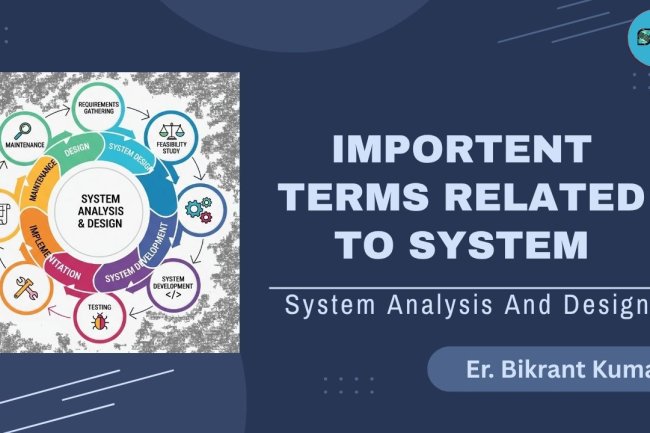Fundamental of System
SAD is a process for analyzing an organization's needs and designing new information systems to meet them.

Definition of System:
A system is a set of interrelated components working together toward a common goal by accepting inputs and producing outputs in an organized transformation process.
Example:
A Banking System includes:
- Customer database
- Account management
Transaction processing
All parts work together to handle banking services
Fundamentals of a System (Key Elements)
|
Element |
Description |
Example |
|
1. Input |
Data or material received by the system for processing |
ATM card + PIN entered |
|
2. Process |
The action done to transform input into output |
Verify PIN, check balance |
|
3. Output |
The result produced by the system |
Cash dispensed, receipt |
|
4. Feedback |
Output that is returned to improve future performance |
Customer feedback on service |
|
5. Control |
Rules and decisions to guide the system's operation |
Limit on daily withdrawal |
|
6. Environment |
Anything outside the system that affects or interacts with it |
Government regulations, users |
|
7. Boundary |
Defines the scope of the system — what's included and what's not |
ATM software ≠ Bank policy |
|
8. Subsystems |
Smaller parts of a system that do specific tasks |
Loan management, account info |
|
9. Interface |
Point where system interacts with users or other systems |
ATM screen, banking app |
Block Diagram of a System:

Example: Library Management System
|
Element |
Description |
|
Input |
Book details, student details, borrowing request |
|
Process |
Verify user, check book availability, record transaction |
|
Output |
Issue slip, due date, updated database |
|
Control |
Rules (e.g., maximum 3 books, return within 15 days) |
|
Feedback |
Late return penalty reports, usage logs |
|
Boundary |
Only library-related activities included |
|
Environment |
Students, librarians, book vendors |
Scope of a System
The scope of a system refers to the area of operation it covers — its functions, limits, and interactions with users or other systems.
- Functional Boundaries
– What the system will do (and what it won’t).
– e.g., A result management system handles only marks, not fee payment. - User Types
– Who will use the system? Admins, students, staff? - Inputs/Outputs
– What data will be entered and what will be produced? - Integration with Other Systems
– Will it work with other software? - Time & Cost Limits
– Deadline and budget for building the system.
Example:
The scope of a hospital management system includes:
- Patient registration
- Doctor appointments
- Billing
But excludes insurance processing.
Nature of a System
The nature of a system means its features or characteristics — what makes it behave like a system.
Key Characteristics of a System
|
Characteristic |
Explanation |
Example |
|
1. Organization |
All components are well-arranged and connected |
Library system: issue, return, search |
|
2. Interaction |
Parts of the system affect each other |
In payroll, employee hours affect salary |
|
3. Interdependence |
All subsystems rely on each other |
Mark entry → total marks → result |
|
4. Integration |
All parts combine to form one working unit |
Student data shared across modules |
|
5. Goal-Oriented |
Every system works toward a clear goal |
Banking system: secure money mgmt. |
|
6. Dynamic |
Systems change with time and environment |
School system updated for NEP |
|
7. Adaptive |
Can respond to internal and external changes |
Adds online classes after COVID |
|
8. Abstract or Physical |
Can be tangible (hardware) or intangible (software, process) |
ERP software (abstract), server (physical) |
Importance of Understanding System Fundamentals:
- Helps in problem identification
- Ensures better design
- Improves efficiency and effectiveness
- Aids in system integration
-----------------------------------
Files
What's Your Reaction?















